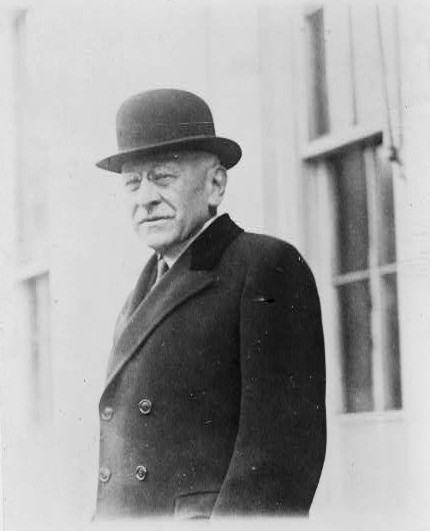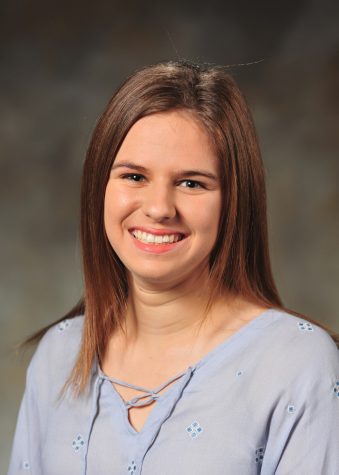Civil rights panel sheds light on black-Jewish relations

photo courtesy of Library of Congress
Julius Rosenwald pictured alone in 1929.
January 20, 2016
There are hidden heroes everywhere: at home, in the classroom and in the greater Jewish community. For film director Aviva Kempner, Julius Rosenwald especially stood out.
In an effort to provide the community with educational programs for the school’s 50th anniversary, CESJDS co-hosted a social justice panel at Adas Israel on Jan. 14. Kempner spoke on the panel along with Pulitzer Prize-winning journalist Clarence Page and Rabbi David Saperstein, who is famous for his social justice advocacy work as director of the Religious Action Center of Reform Judaism.
Kempner released her film “Rosenwald” on Aug. 14, uncovering stories of the Rosenwald schools that provided black students in the South with an education during the early 20th century. While Rosenwald was a Jewish executive at Sears Roebuck, he donated money to build more than 5,000 schools for blacks in the South. The schools were built before the Supreme Court’s ruling in 1954 that struck down segregation in school, and were therefore crucial for the black communities they served. It is estimated that one in three blacks who went to school in the South did so at a Rosenwald school.
On Nov. 30, Upper School students learned about the Rosenwald schools in k’hilah, and the following week Kempner spoke to them about her film.
“I think that Rosenwald was a hero to many and can still serve in that way,” Director of Jewish Life Stephanie Hoffman said. “[Rosenwald] looked at a way to help the larger community, help those who are in need, and do it in a way that they are also able to help themselves.”
Rosenwald’s story is one of many moments in American history where the black and Jewish communities allied together.
Avi Edelman is the Program Director of Operation Understanding D.C. (OUDC), a cross-cultural leadership and dialogue program for black and Jewish high school students in the D.C. area. According to Edelman, the World War II time period was also significant for blacks and Jews as many Jewish refugees were recruited by blacks to teach at Southern universities when it was difficult for them to find jobs elsewhere. During the Civil Rights movement, many Jews from the North eagerly participated in blacks’ fight for equal rights; Rabbi Abraham Joshua Heschel, who taught at the Jewish Theological Seminary, marched with Martin Luther King Jr. on several occasions.
As the alliance during the Civil Rights Movement faded into the past, tensions between the groups grew. Many Jews were troubled by the anti-Semitic Louis Farrakhan, leader of the Nation of Islam, and were also concerned that black advocacy of affirmative action programs would lead to the exclusion of Jews from college. These tensions were punctuated by the Crown Heights riots of 1991, a three-day riot between blacks and Orthodox Jews in the Crown Heights neighborhood of Brooklyn.
JDS was founded during the Civil Rights Movement, and Director of Development Sharon Metro Roll hopes the Adas panel will spark conversations about the relationship between JDS, blacks and other minority groups. For Edelman, repairing relationships within the Jewish community itself is also important.
“There are many African American Jews, there are many Latino Jews, and something the Jewish community needs to do within itself, I think, is be more inclusive with the many different types of Jews there are,” Edelman said.
According to Jewish History teacher Rachel Bergstein, it is relatively common for American Jews to say that they empathize with the black experience in the U.S., because they see themselves as sharing a history of persecution with blacks. Nevertheless, Bergstein said that this narrative might be a bit factually tenuous and pointed out that blacks largely do not feel as connected to Jews as Jews feel connected to blacks.
“Even though Jews participated in civil rights, first of all not every Jew participated, and it wasn’t enough to really see a kinship I think from the black perspective, to see Jews as any different than just white people,” Bergstein said. “So if the separation was white versus blacks, Jews are going to fall on the white side of the color line from a black perspective.”
In her American Jewish History through Film and Literature course, Bergstein and her students have been discussing comparisons between Jews and blacks in the context of social equality. Bergstein taught her class about the Jews living in the South during the Civil Rights Movement. Her students watched “Driving Miss Daisy,” a movie about the unconventional relationship between an older Jewish woman and her black chauffeur. The question of to what extent Miss Daisy, the affluent Jewish woman, actually becomes “best friends” with Hoke, the black chauffeur, is central to the movie and black-Jewish relations in general.
Nevertheless, junior Daniel Baumstein, who is interested in Jewish and black relations and will be participating in OUDC, remains inspired by the alliance between blacks and Jews during the Civil Rights movement and believes that JDS could do more to teach students about it.
“I think there’s a lack of education on the Civil Rights Movement and issues outside of the Jewish community,” Baumstein said. “Especially with Martin Luther King Jr. and with all of the rabbis and the Jews involved … I feel like there could be more done to talk about what happened so that their legacy and what they were trying to do can continue on through us because we are the next generation.”







